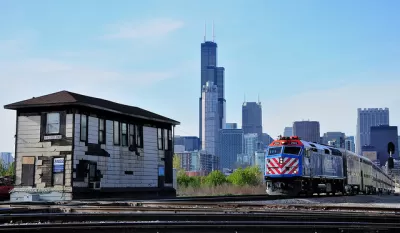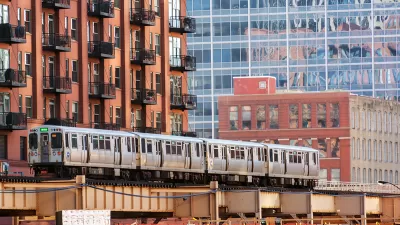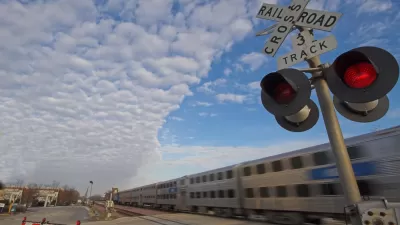On Chicago's massive south side, fixing transit means working on more than just CTA trains.

Chicago's North Side is denser and more prosperous than its South Side. Serving the South Side’s population is more difficult than serving the North Side, not only because its equally-sized population is more diffused, but also because those who live in the area are more likely to be children or elderly than are their counterparts on the North Side, so their transit needs are less likely to be for commutes to the center city to work. That population is more likely to be in school or retired.
"Faced with this set of challenges, advocates and policymakers theoretically have two basic options: Encourage more housing, shops, and jobs near existing transit; and expand the rapid transit network," Daniel Key Hertz argues in a piece for South Side Weekly. Toward the goal of improving transit for the South Side, Kay Hertz recommends waking a "sleeping giant" by leveraging the full potential of the Metra: by connecting its payment system to the CTA's, by making its trips more frequent and by modernizing the city's buses, which have an outsized effect on South Side Chicagoans. "Send a train down the Metra tracks every ten to fifteen minutes and install turnstiles that take Ventra (or give conductors handheld readers), and you’ve effectively created a new “L” line without laying a single foot of new track," Kay Hertz argues.
This work would go a long way toward addressing the persistent inequities in the Midwest's biggest city.
FULL STORY: Beyond the ‘L’

Alabama: Trump Terminates Settlements for Black Communities Harmed By Raw Sewage
Trump deemed the landmark civil rights agreement “illegal DEI and environmental justice policy.”

Study: Maui’s Plan to Convert Vacation Rentals to Long-Term Housing Could Cause Nearly $1 Billion Economic Loss
The plan would reduce visitor accommodation by 25% resulting in 1,900 jobs lost.

Planetizen Federal Action Tracker
A weekly monitor of how Trump’s orders and actions are impacting planners and planning in America.

Wind Energy on the Rise Despite Federal Policy Reversal
The Trump administration is revoking federal support for renewable energy, but demand for new projects continues unabated.

Passengers Flock to Caltrain After Electrification
The new electric trains are running faster and more reliably, leading to strong ridership growth on the Bay Area rail system.

Texas Churches Rally Behind ‘Yes in God’s Back Yard’ Legislation
Religious leaders want the state to reduce zoning regulations to streamline leasing church-owned land to housing developers.
Urban Design for Planners 1: Software Tools
This six-course series explores essential urban design concepts using open source software and equips planners with the tools they need to participate fully in the urban design process.
Planning for Universal Design
Learn the tools for implementing Universal Design in planning regulations.
Caltrans
Smith Gee Studio
Institute for Housing and Urban Development Studies (IHS)
City of Grandview
Harvard GSD Executive Education
Toledo-Lucas County Plan Commissions
Salt Lake City
NYU Wagner Graduate School of Public Service





























